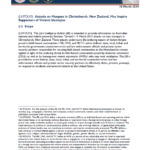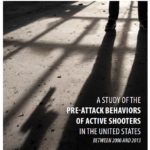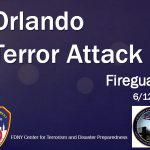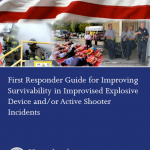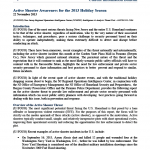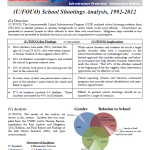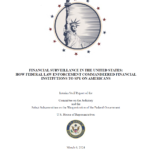
The Committee on the Judiciary and its Select Subcommittee on the Weaponization of the Federal Government are charged by the House of Representatives with upholding fundamental American civil liberties. As a part of this mission, the Committee and Select Subcommittee have uncovered startling evidence that the federal government was engaged in broad financial surveillance, prying into the private transactions of American consumers. This financial surveillance was not predicated on any specific evidence of particularized criminal conduct and, even worse, it keyed on terms and specific transactions that concerned core political and religious expression protected by the Constitution.

